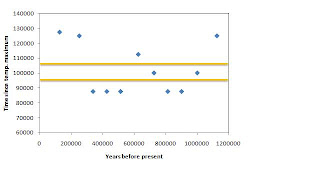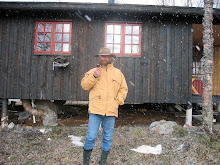Sven Egil Omdal skrev for en tid siden i Uke-Adressa at
kritikk av teorien om den menneskeskapte klimaendring ikke hører hjemme i den
seriøse presse, svaret om disse klimaendringene er gitt og kan ikke diskuteres
lengre. Dette er en holdning som hører hjemme i den “store” tradisjon til
forskere som for eksempel Trofim Lysenko, som fikk monopol på sitt fagfelt
under Stalin, med katastrofale følger. Og det er det motsatte av den Ioniske
greske vitenskapstradisjon fra blant andre Demokrit, som satte diskusjon og
kritikk høyt, men som gikk tapt et par hundre år før kristus, og ble erstattet
av en dogmatisk vinkling som motarbeidet kritikk av etablerte sannsigere, noe
som utsatte vitenskapen nesten 2000 år. Denne holdningen er også i motsetning
til den humboldske vitenskapsfilosofi som er basert på de frie universiteter,
den frie tanke og en humanistisk angrepsmåte til kunnskap.
Det er ikke mulig å si med sikkerhet noe om fremtidige
hendelser som inkluderer mange stokastiske prosesser og som attpåtil avhenger
av et utall andre ikke-stokastiske men svært komplekse sammenhenger, ikke bare
her på Jorden men også i verdensrommet, uten at vi kjenner alle prosessene
eller sannsynligheten av deres ulike resultater. Den lærdom vi nå får om
klimsystemene er imponerende, men det er samtidig farlig å stole for mye på
resultatene av avanserte modeller så lenge vi ikke vet om de er riktige. Det vi
måler i dag og fremover må være statistisk forskjellig fra det vi vet er
naturlig. Albert Einstein sa at det var nok med en motstander for å forkaste
hands teorier, forutsatt at motstanderen hadde rett.
Vi hadde en tilsvarende diskusjon om sur nedbør for noen
tiår siden, med tilsvarende dogmatikk, noe som fikk alvorlige konsekvenser for
karrieren til endel modige forskere som tok til motmæle. Vi gikk ikke under den
gangen heller. Fri og kontinuerlig kritikk er uvurderlig.
Ketil Haarstad
Vestby

